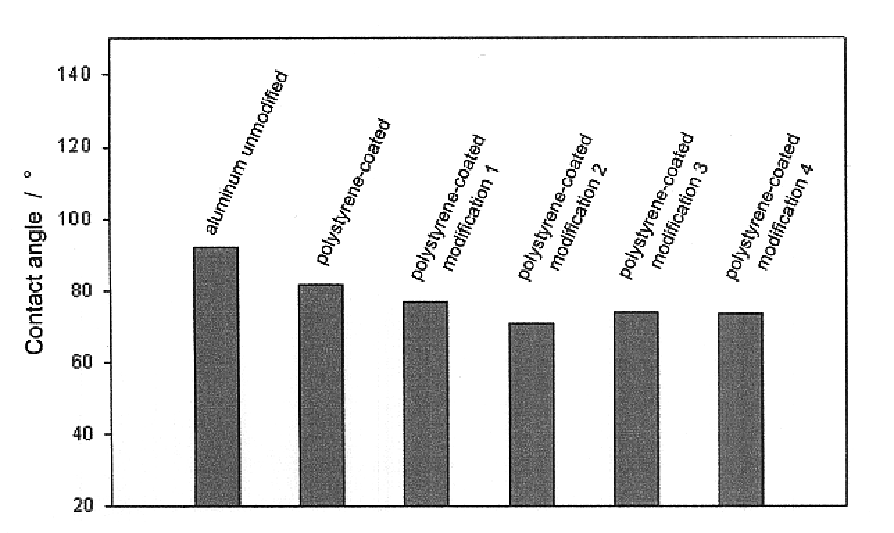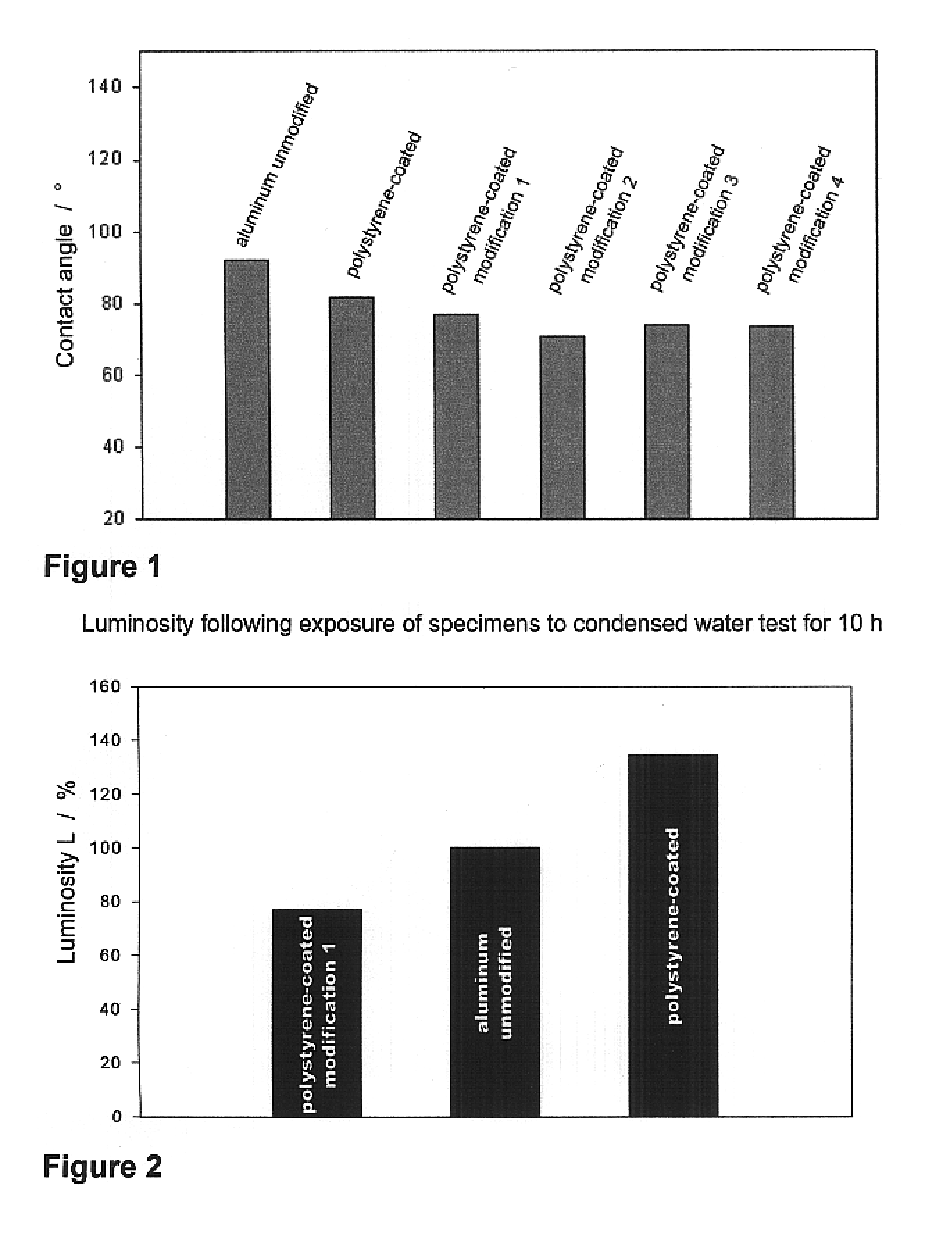Method of treating the surface of substrates
a substrate and surface technology, applied in the field of substrate treatment, can solve problems such as lacquer or paint becoming detached
- Summary
- Abstract
- Description
- Claims
- Application Information
AI Technical Summary
Benefits of technology
Problems solved by technology
Method used
Image
Examples
example 1
[0058]12 g of pigment (Big Resist E900, sold by Eckart) are dispersed at 800 rpm for a period of 30 min in 40 mL of a 3:1 v / v decane / cyclohexane mixture with thermostatic temperature control at 23° C. The dispersion is then placed in a round-bottomed flask equipped with a reflux condenser and is heated to 65° C. 5 mL of a 33 wt % strength solution (room temperature) of a polystyrene polymer modified with acrylic end groups (molar mass 12,000 g / mol, sold by Aldrich, UCST: ca 50-55° C.) in cyclohexane are added, and the resulting mixture is cooled to 35° C. and, following a period of 10 minutes, again heated to 65° C. 2.2 mL of a 33 wt % strength solution of the polystyrene derivative are added (room temperature) and the mixture is cooled to 35° C. It is then heated to 50° C., filtered, and dried at room temperature.
[0059]Production of the pigmented paint for execution of the condensed water test according to DIN 50,017:
example 3
[0064]An aluminum plate (Al 99.5; dimensions 50×20×1.5 mm) is placed in a 50 mL screw cap jar together with 50 mL of a 1:4 chlorobenzene / decane mixture. 0.5 mL of a 33% strength solution of a polystyrene polymer modified with acrylic end groups (molar mass 12,000 g / mol, sold by Aldrich; UCST from ca 50° to 55° C.) in cyclohexane are added and the mixture is heated until the polymer has dissolved (ca 50-55° C.). The mixture is cooled to 25° C., and after 10 min it is again heated to 50° C. After re-cooling to 25° C., the aluminum plate is taken out.
[0065]For additional modification of the deposited layers, test pieces obtained as in Example 3 are each dipped in one of various reaction mixtures over a period of 2 h at 23° C. and then rinsed a number of times with distilled water and dried in a forced air oven for a period of 10 min at 80° C.
modification 1
[0066]Immersion in a reaction mixture comprising 50 mL of a 1:4 chlorobenzene / decane mixture, 5 mL of a ca 2% strength solution of anhydrous AlCl3 in chlorobenzene, and 1 mL of propionic chloride.
PUM
| Property | Measurement | Unit |
|---|---|---|
| temperature | aaaaa | aaaaa |
| temperature | aaaaa | aaaaa |
| molar mass | aaaaa | aaaaa |
Abstract
Description
Claims
Application Information
 Login to View More
Login to View More - R&D
- Intellectual Property
- Life Sciences
- Materials
- Tech Scout
- Unparalleled Data Quality
- Higher Quality Content
- 60% Fewer Hallucinations
Browse by: Latest US Patents, China's latest patents, Technical Efficacy Thesaurus, Application Domain, Technology Topic, Popular Technical Reports.
© 2025 PatSnap. All rights reserved.Legal|Privacy policy|Modern Slavery Act Transparency Statement|Sitemap|About US| Contact US: help@patsnap.com


